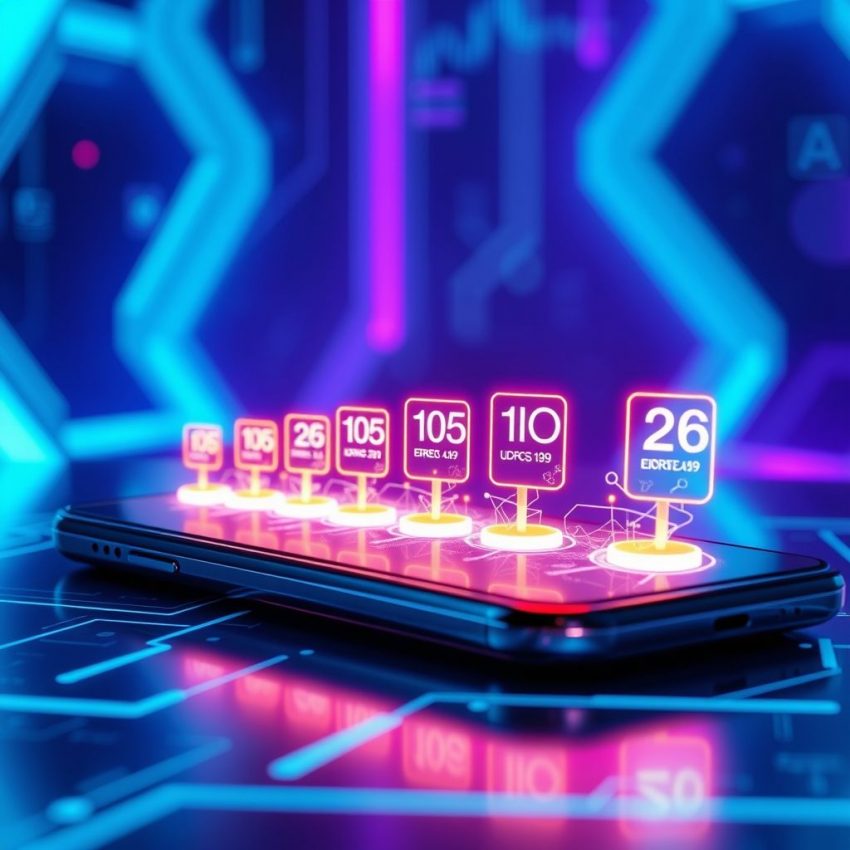From iOS 19 to iOS 26: Apple's iOS Leap Explained – A Hypothetical Journey
While Apple hasn't even released iOS 17 yet, let's indulge in a bit of speculative fun and imagine the monumental leap from a hypothetical iOS 19 to a future iOS 26. Seven major iOS releases represent a potential paradigm shift in mobile operating systems, and we can extrapolate some exciting (and maybe slightly terrifying) possibilities.
The Foundation: iOS 19 – 22 (The Consolidation & Refinement Era)
Assuming a continuation of current trends, iOS 19-22 would likely focus on:
- Enhanced Privacy & Security: We'd see even more granular control over data sharing, potentially integrating advanced threat detection and proactive security measures directly into the OS. Think AI-powered phishing detection and automated vulnerability patching.
- AI Integration: Beyond Siri, we’d see AI seamlessly woven into every aspect of the OS. Contextual suggestions, proactive task management, intelligent photo organization, and personalized user experiences would become the norm.
- Hardware Synergy: Expect deeper integration with Apple's growing ecosystem of devices. Seamless handoffs, enhanced cross-device collaboration, and perhaps even more advanced augmented reality features leveraging advancements in AR/VR technology.
- Improved Performance & Efficiency: Expect continued optimization for power efficiency and performance, enabling even longer battery life and smoother multitasking on ever-more-powerful hardware.
The Leap Forward: iOS 23 – 26 (The Transformative Era)
The jump from iOS 22 to iOS 26 marks the point where speculative leaps become more pronounced. We might see:
- The Metaverse Integration: iOS 26 could deeply integrate with Apple's vision of the metaverse. Expect advanced AR/VR capabilities, potentially including holographic communication and immersive gaming experiences directly within the OS.
- Decentralization and Web3: Apple might cautiously explore blockchain technology and Web3 features, providing users with more control over their digital identities and assets. This could be a controversial move, balancing user privacy with the emerging technologies.
- Advanced Biometric Security: Beyond Face ID and Touch ID, we could see more advanced biometric authentication methods, perhaps even incorporating DNA or retinal scanning (though ethical considerations would be paramount).
- Personalized AI Companions: Imagine a highly sophisticated AI assistant that learns and adapts to your needs far beyond Siri's current capabilities, acting as a true digital companion and personal assistant.
- Beyond the Smartphone: iOS 26 might extend beyond smartphones. Imagine seamless integration with smart homes, vehicles, and other connected devices, blurring the lines between the operating system and the wider connected world.
The Challenges:
Such a dramatic leap wouldn’t be without challenges. Compatibility issues, security vulnerabilities, and the potential for over-reliance on AI would all need careful consideration. The ethical implications of advanced AI integration and biometric security would also require significant public discourse.
Conclusion:
Predicting the future of iOS is a fun exercise, but it's important to remember that it’s just that – speculation. However, by looking at current trends and extrapolating potential developments, we can gain a glimpse into the possible future of mobile operating systems. iOS 26 might not look exactly as envisioned here, but one thing is certain: the journey from iOS 19 to iOS 26 would represent a transformative period in the history of mobile technology.
Don’t miss out on this exclusive deal, specially curated for our readers! Cheap IONOS Web Hosting
This page includes affiliate links. If you make a qualifying purchase through these links, I may earn a commission at no extra cost to you. For more details, please refer to the disclaimer page. disclaimer page.

